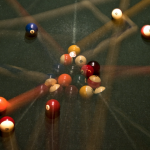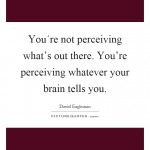My colleague Kate and I are always on the same wavelength. Our PLC is focused like a laser on assessment data. My school’s administration in transparent; my district’s sometimes opaque. The lens through which we view an issue determines what we see. Have you noticed recently how often people seem to be talking about the “optics” of everything?
Our language resonates with the vocabulary of the physics of light, while our brains live in the dark. Literally.
I had never thought about that until Anthony Doerr pointed it out in his novel, All the Light We Can Not See ,whose title and this quote alone are worth the price:
“The brain is locked in total darkness, children… It floats in a clear liquid inside the skull, never in the light. And yet the world it constructs in the mind is full of light. It brims with color and movement. So how, children, does the brain, which lives without a spark of light build for us a world of light?”
And now I’m thinking about it all the time, as well as the implications for teachers and education. Here are a few initial thoughts.
No spark of light?
How does each of the senses gets messages to the brain through electro-chemical processes and how does the brain interpret each sense’s signals differently. What are the implications for teaching and learning?
Dragons at the window(From a different quote in the book.)
Teachers face when inhibitions when they first want to engage with teacher leadership but can’t quite take the plunge. Then once engaged find the monsters were imaginary. Mostly.
Teacher Leader Vision
With sight we detect light/dark, color, movement, and depth – how could those serve as metaphors of what we see in teacher leadership? How would the metaphors change as we look inward and outward.
It’s a two way street
As teachers we strive to illuminate our pupils’ minds, but we also strive to get them to project their full of light minds.
The brain constructs the world?
Sounds kind of solipsistic The brain might construct meaning, but the world? Hmmm. What about a world, different from the world but a fair enough model to make our way through?
The thinking continues, but I’ll stop there.
The protagonist of All the Light We Cannot See is blind. I had a hunch so out of curiosity I searched the book’s Kindle version for the word “window” and found it used 191 times in 531 pages.
The message is none too subtle.









